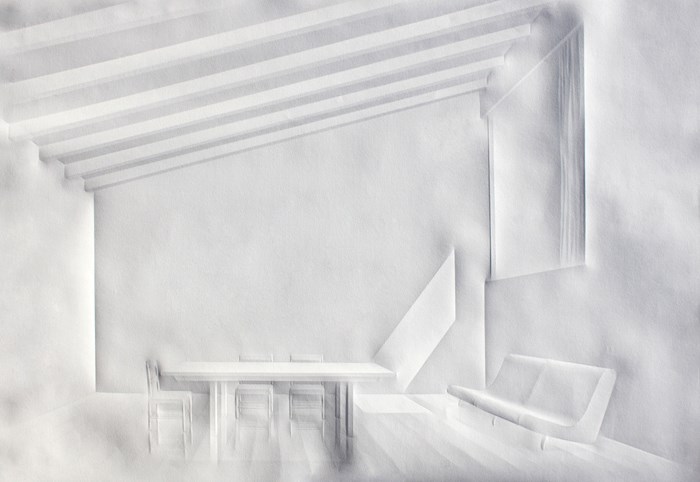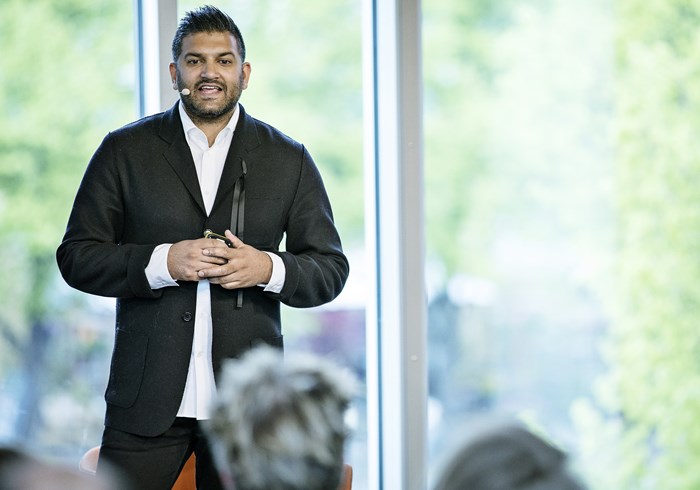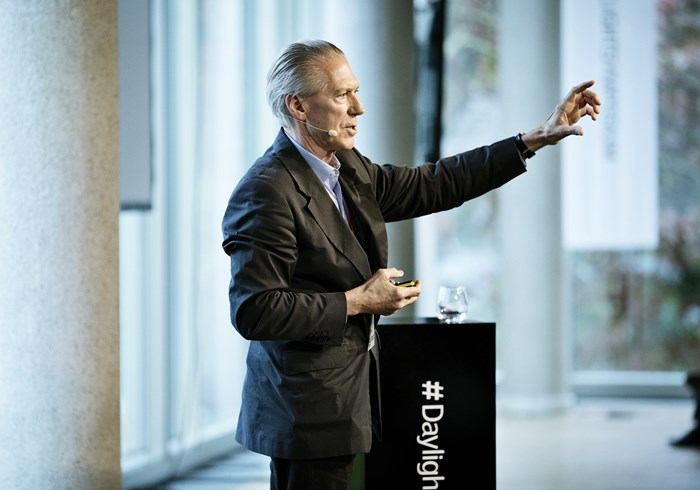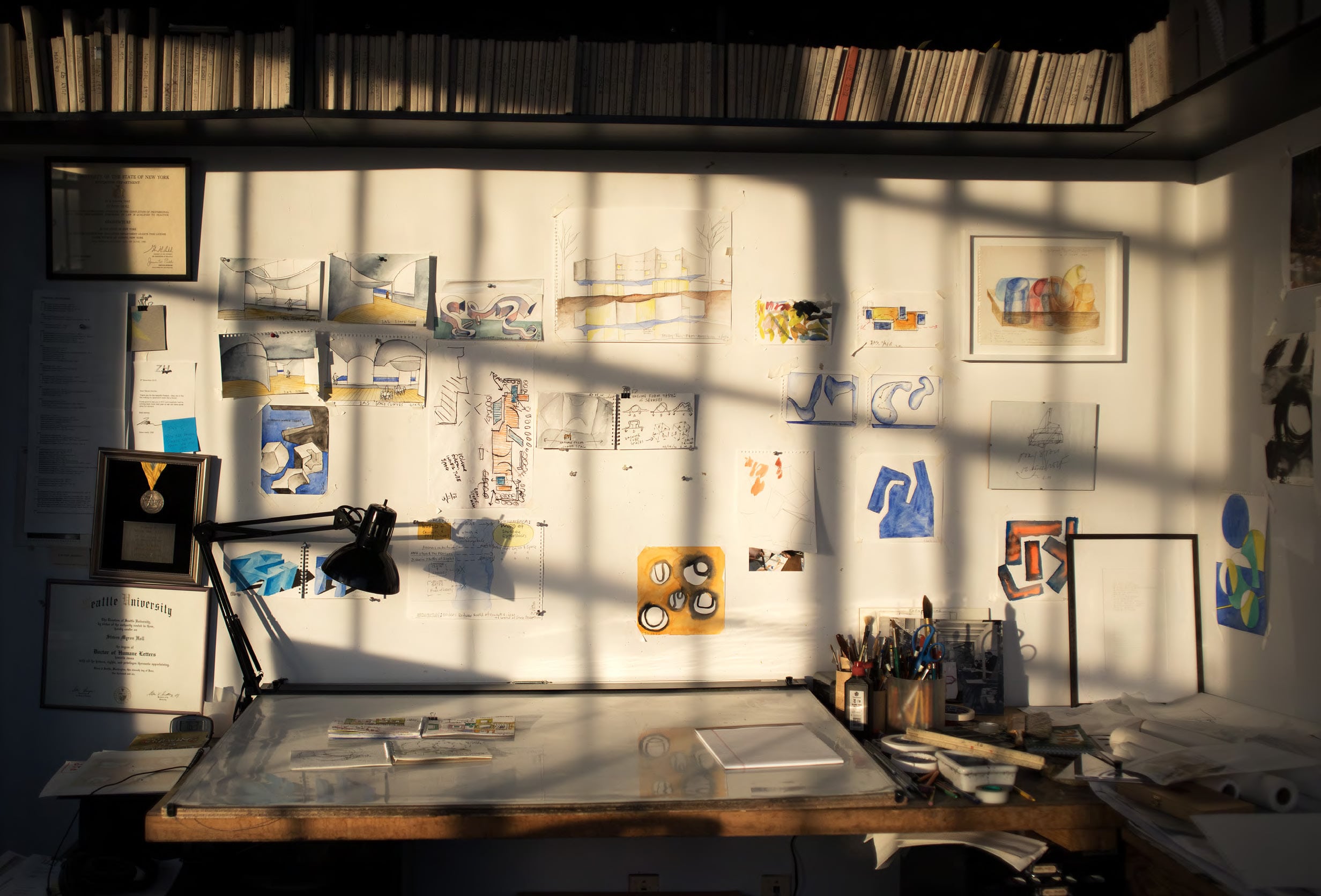
Jakob Schoof spoke to Daylight Award for Daylight in Architecture Winner Steven Holl about his method of working and the meaning of daylight in his buildings.
In November 2016, Steven Holl received The Daylight Award for Daylight in Architecture. Holl’s ability to orchestrate rooms with light is unparalleled; the emotional intensity of his rooms and buildings is impressive. Their special quality arises from his method of working; he deliberately keeps his office small, prefers to draft his initial designs using a watercolour pad and gets his inspirations from music, philosophy and literature.
Photography by Gregory Halpern
Watercolours by Steven Holl
Daylight & Architecture #27
We desire an architecture that is integral rather than empirical, that has depth rather than breadth. We desire an architecture that will inspire the soul.
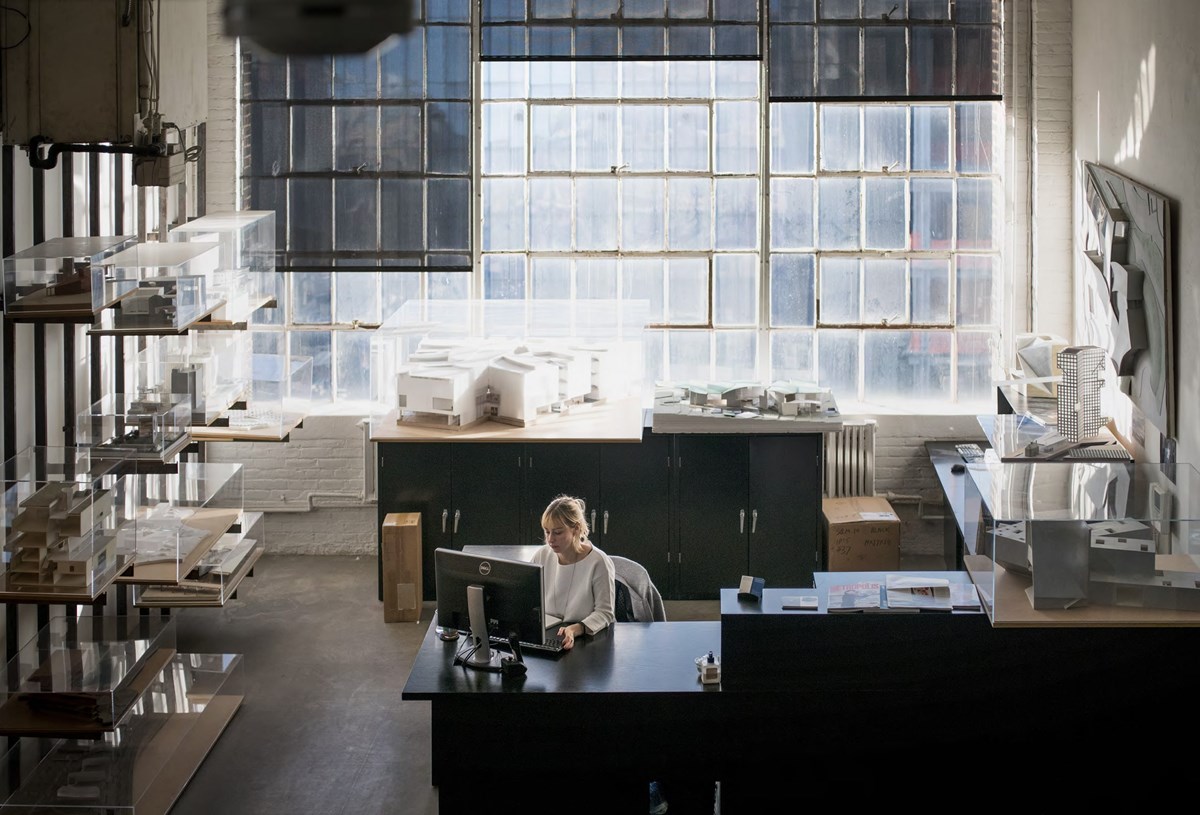
Of all the texts Steven Holl has written over a career spanning more than 40 years, none captures his attitude to design as concisely and precisely as this sentence from his book ‘Parallax’ (2000). The quality of Holl’s architecture cannot be expressed in terms of numbers but is immediately accessible to the senses. Rather than impressing the viewer with an eye-catching design, his buildings stimulate those who wander through them with their atmospheric density and complexity. He uses one medium in particular to inspire the soul: daylight. He has reflected on this many times in his writings. “Space is oblivion without light. A building speaks through the silence of perception orchestrated by light,” wrote Holl in 2006 at the start of his book ‘Luminosity/Porosity’.
Space is oblivion without light; this sentence is, in many ways, the complementary counterpart of Louis Kahn’s famous verdict, “the sun never knew how great it was until it hit the side of a building.” Daylight and architecture need one another; only in their interaction can they be truly experienced by humans. The spiritual kinship that reverberates in both quotations is not a coincidence. Steven Holl refers to Louis Kahn as one of the architects who had an early influence on his own work with daylight. At the start of his career in 1974, Holl almost landed a job in Kahn‘s office (he had already completed a job interview), but the premature death of the great American architect intervened.
Alongside the work of Louis Kahn and Alvar Aalto, two very contrasting places and the quality of their daylight captivated Steven Holl at an early age − Puget Sound near Seattle, where he spent his childhood, and the Pantheon in Rome. “The light of the Pacific North West is one of my earliest childhood memories. It is quite similar to the light in Scandinavia. The sun is very low in winter, casting long horizontal shadows, and it is very precious because many days are cloudy. In summer, on the other hand, there is twilight until 10 p.m. and there is this impressive chiaroscuro of the sky. This spectacle of the sunlight reflected off the water and the changing angles of the sun is very emotionally embedded in me.”
At the age of 19, Steven Holl moved to Rome and lived for several months in a street behind the Pantheon. “The quality of light in this oculus and in this spherical space was mesmerising. Even in the context of Rome, with all its powerful architecture, the atmosphere of this place that forever changes with daylight is special.
Whenever I am in Rome, I still go back to it and I love it.”
To Steven Holl, daylight is not merely a means of shaping the atmosphere of his buildings and enriching the sensual perception of their users − “we tend to underestimate the psychological power and the health aspects of light, particularly in our society, which is often driven more towards commercial ends. As architects, it is our task to bring these aspects to the table, and to remind our clients and all the experts involved in building design today of the psychological and biological importance of light.”
In all his designs, Steven Holl takes up the challenge of bringing daylight into places where it is not usually found. “In my buildings, I take great care that all rooms receive natural light. Whether it is a bedroom in a hospital, a meeting room in an office or a museum gallery, daylight is important for all these spaces. Even inside a building, you need to be able to feel the passing of the day and to see the sun setting.”
In New York, the city where StevenHoll lives and works today, this cannot always be taken for granted. “New York has a dearth of daylight. It is a problem, because these high-rise towers are too tall and too close together.” One notable exception is the building where Steven Holl’s office is located. The firm operates from the eleventh floor of a twelve-storey 19th century industrial building (complete with factory chimney) right next to Hudson Yards, Manhattan’s biggest urban redevelopment project. “We bought this floor because it has daylight on all four sides. Just look at these light effects,” says Holl, pointing at the wall next to the old steel-framed window in the meeting room. “Just look at this superimposition of light coming in from different directions, this layering and then the texture of the glass. Some of the glass panes are very old, so they distort and refract the light in different ways. I remember someone once asked me what my favourite material was, and I said light. When you sit in this space and see the light coming in, you understand why.”
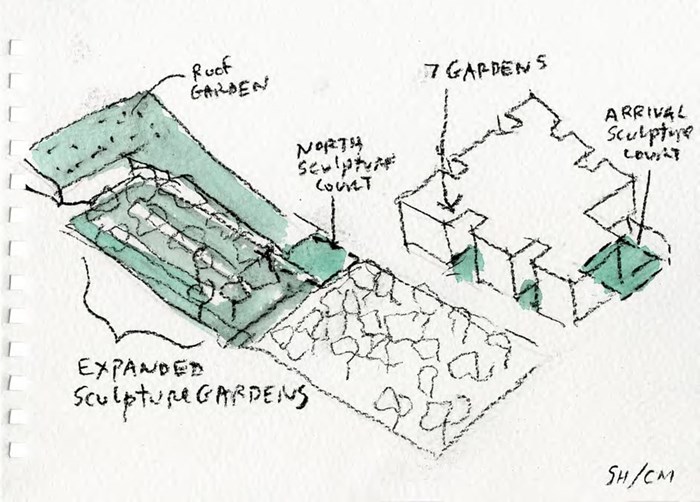
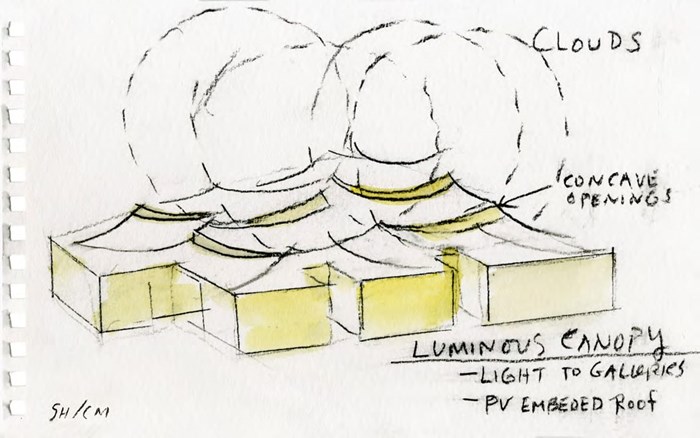
Intensity beats size –
Steven Holl’s work philosophy
While the building on West 31st Street was an imposing edifice in the century before last, today it appears almost crushed by the towering office blocks next door. At the same time, the stark contrast between its coarse brick walls and the reflecting curtain-wall facades perfectly symbolises Steven Holl’s own attitude as an architect. “Architecture is an art. For me, it’s not a corporate activity. I don’t like corporate architecture.”1 For this reason, Holl sees no reason to increase the size of his office – on the contrary. “I have set the limit at 44 people in the office. We had 64 five years ago but that was too many. I realised that I was spending too much time with management issues and arguing with people. And do you know what? Even with a staff of 44, we have done the largest skyscraper you can do in China. On the other hand, the limited office size allows us to focus on details and materials, and make sure they turn out exactly the way we want them to be.”
Occasionally, Steven Holl even has to reject commissions in order to keep his office small. “Not on a regular basis, but it does happen occasionally. I am interested in inspired spaces, in social spaces, and in urban spaces in the city. So when someone asks me to do a monofunctional office tower in a suburban location, I will turn it down. I love architecture too much to be doing it for money. And not every commission that approaches you will necessarily have a chance to become architecture.”
In order to turn his designs into reality, Steven Holl relies on a hand-picked team of staff members. “The people here are geniuses. I am very fortunate − because
every year I teach a master class at Columbia University that has twelve students. Then each year, I take the most brilliant student and bring him or her to work in this office. At least ten of the 44 people I currently work with are former students.”
Ingenuity is also a trait that Steven Holl expects from the consultants he collaborates with. “They need to be fearless, inventive geniuses if you want to push the envelope each time you’re doing a project. With all respect for the pragmatists – there must also be other ways to approach a creative process. You cannot find out anything about things that you don’t know if you just think in a pragmatic, objective way.”
One of these ‘fearless geniuses’ is Matthias Schuler from Transsolar, with whom Steven Holl has been collaborating on all of his projects for the last decade. “We benefit a lot from Matthias and his obsession with the best environmental possibilities in a building – from geothermal and solar energy to the construction and choice of materials. Whenever possible, I try to bring him in as early as possible in the design process.” Currently the two designers are working on a library in Malawi. “I approached Matthias even before we knew the site and asked him, ‘What would you do if you had an ideal site with no restrictions and were asked to design a 60,000 square foot library, where would you begin’? So he came up with this sketch of a curvilinear roof structure that maximises reflected light on the inside and maximises the capture of solar energy on the outside. Basically, the whole design of the library is based on energy and light, and that’s all.”
Bringing hand and mind together –
how Steven Holl creates his designs
Usually, it is Steven Holl himself who supplies the concept sketches for his buildings. By now, he has tens of thousands of them, all carefully catalogued and stored in boxes. All of them were created using a pencil and watercolours in spiral-bound notebooks with a uniform size of 5 × 7 inches. The small paintings are simultaneously conceptual and spatial. Although they are sometimes playfully vague, they capture the idea that will drive the design of an entire project. “I think that you must, in a way, bring the mind and the hand together to begin a project. This seed that starts the project is something you’re emotionally feeling as well as intellectually feeling. The concept sketch, via watercolour, is a perfect way to begin.”2 Often Steven Holl will sketch 20 or 30 different concept ideas in this manner before he settles on one of them. “I am uneasy until I define the concept. But once the decision is taken, I stick to it and the entire team works to reinforce it.”3 Alongside the initial concept of each project, many construction details also have their seeds on Steven Holl’s watercolour pad. “I also need to draw along the way so that it can steer the process. After all, I have a whole team of people working with me that has to move in the same direction.”
In addition to his watercolour sketches, the second important constant in Steven Holl’s work is his use of the golden ratio as a proportioning system. For 40 years, all of his designs have been based on the Fibonacci series and an aspect ratio of 1:1.618. “This proportion is in our blood and in our bones, where it determines the lengths of the individual joints of our fingers, for example. You will find it in a nautilus shell, a pine cone, and even in the spiral of the solar wind. For me it is a fine-tuning device. I don’t start with it ever, but introduce it during the design process to bring the individual elements and openings of a building in balance. Proportions in architecture are very important. Unfortunately, they are often neglected in our era of computer drawings that are inherently scaleless.”

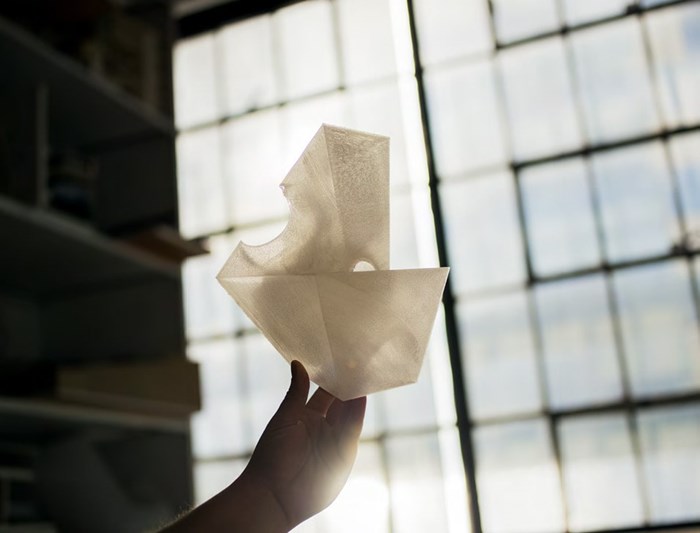
Bringing hand and mind together –
how Steven Holl creates his designs
Usually, it is Steven Holl himself who supplies the concept sketches for his buildings. By now, he has tens of thousands of them, all carefully catalogued and stored in boxes. All of them were created using a pencil and watercolours in spiral-bound notebooks with a uniform size of 5 × 7 inches. The small paintings are simultaneously conceptual and spatial. Although they are sometimes playfully vague, they capture the idea that will drive the design of an entire project. “I think that you must, in a way, bring the mind and the hand together to begin a project. This seed that starts the project is something you’re emotionally feeling as well as intellectually feeling. The concept sketch, via watercolour, is a perfect way to begin.”2 Often Steven Holl will sketch 20 or 30 different concept ideas in this manner before he settles on one of them. “I am uneasy until I define the concept. But once the decision is taken, I stick to it and the entire team works to reinforce it.”3 Alongside the initial concept of each project, many construction details also have their seeds on Steven Holl’s watercolour pad. “I also need to draw along the way so that it can steer the process. After all, I have a whole team of people working with me that has to move in the same direction.”
In addition to his watercolour sketches, the second important constant in Steven Holl’s work is his use of the golden ratio as a proportioning system. For 40 years, all of his designs have been based on the Fibonacci series and an aspect ratio of 1:1.618. “This proportion is in our blood and in our bones, where it determines the lengths of the individual joints of our fingers, for example. You will find it in a nautilus shell, a pine cone, and even in the spiral of the solar wind. For me it is a fine-tuning device. I don’t start with it ever, but introduce it during the design process to bring the individual elements and openings of a building in balance. Proportions in architecture are very important. Unfortunately, they are often neglected in our era of computer drawings that are inherently scaleless.”
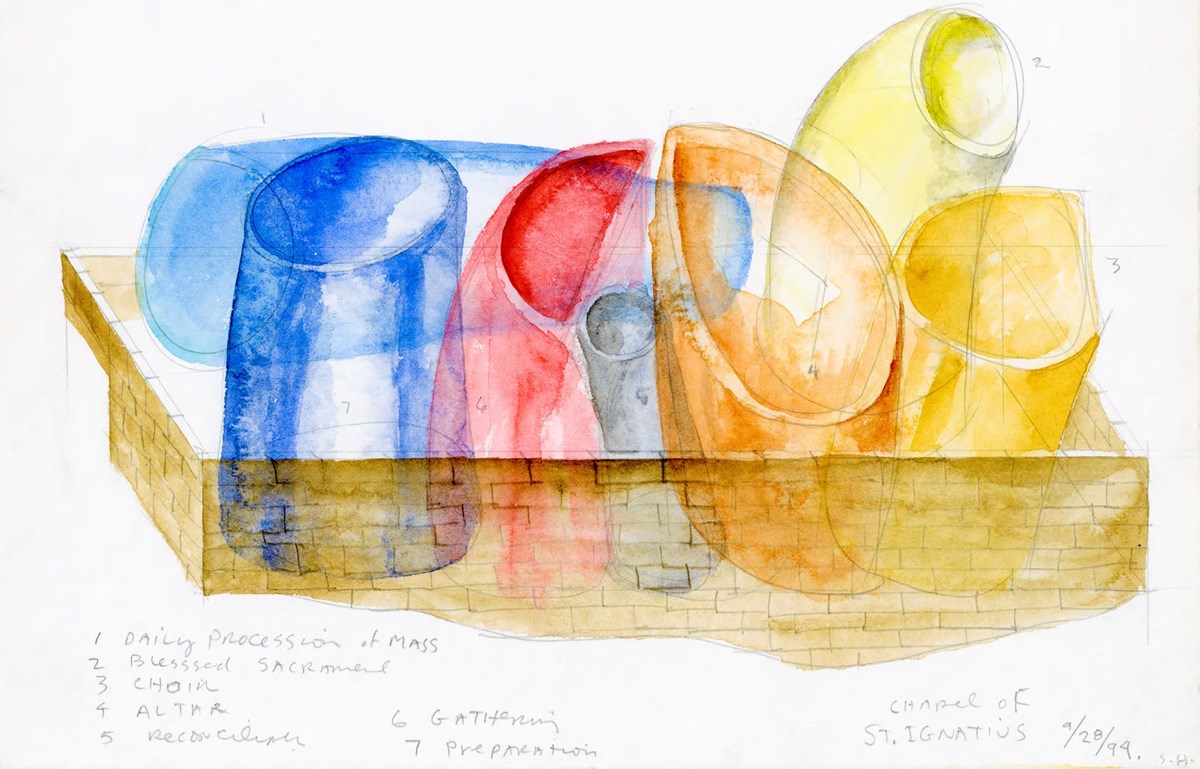
“The metaphor of light is shaped in different volumes emerging from the roof whose irregularities aim at different qualities of light: east facing, south facing, west and north facing, all gathered together for one united ceremony.”
Music-made concrete –
Steven Holl’s approach to teaching
Once the basic design decisions have been taken, Steven Holl Architects make use of the same full array of modern computer software utilised by other architectural offices. But the shelves in the openplan office on the west side of Manhattan are also filled with many design models. “Models are an excellent way to experiment with materials, their translucency or transparency, and the reflections and refractions they produce. The models that we build are full of different properties of light. This is something you can never achieve in computer renderings.”
In Steven Holl’s view, models are also a good way of increasing students’ awareness of light, materials and the haptic quality of architecture. “I don’t even tell my students not to use computers. They intuitively understand it.” Together with his wife and former student, Dimitra Tsachrelia, and the composer Raphael Mostel, Steven Holl currently teaches a series of studios called ‘Architectonics of Music’. Here the students undertake experiments translating music scores into space, material and form. “This year we are working with music by Iannis Xenakis, who used to work for Le Corbusier. There is a lot of scientific, mathematical depth in the way he composed and we try to conceive architectural spaces that have their point of origin in these complex musical structures.”
The parallels between architecture, music and other art forms have always interested Steven Holl. “One of the great excitements now in architecture is that we are free. I think a building can be based on references to music, dance, painting, sculpture or a poem.”4 In this context, he assigns a special role to music: “Music, like architecture, is an immersive experience – it surrounds you. One can turn away from a painting or a work of sculpture, while music and architecture engulf the body in space.” Just as a composer works with sound, the architect orchestrates his buildings with light. “To me, light is to space what sound is to music. The experience of architecture, the overlapping perspectives – it is the equivalent of spatial acoustics to light.”
Steven Holl does not restrict himself to such abstract comparisons. A few years ago, he created a private home with art gallery for a Korean client, the design of which was based on a piece of music by composer Istvan Anhalt.5 “The piece had never been played before. I thought it was really interesting that you could somehow physically build a conceptual work that hadn’t actually been physically performed. It would be played in space and light.”6
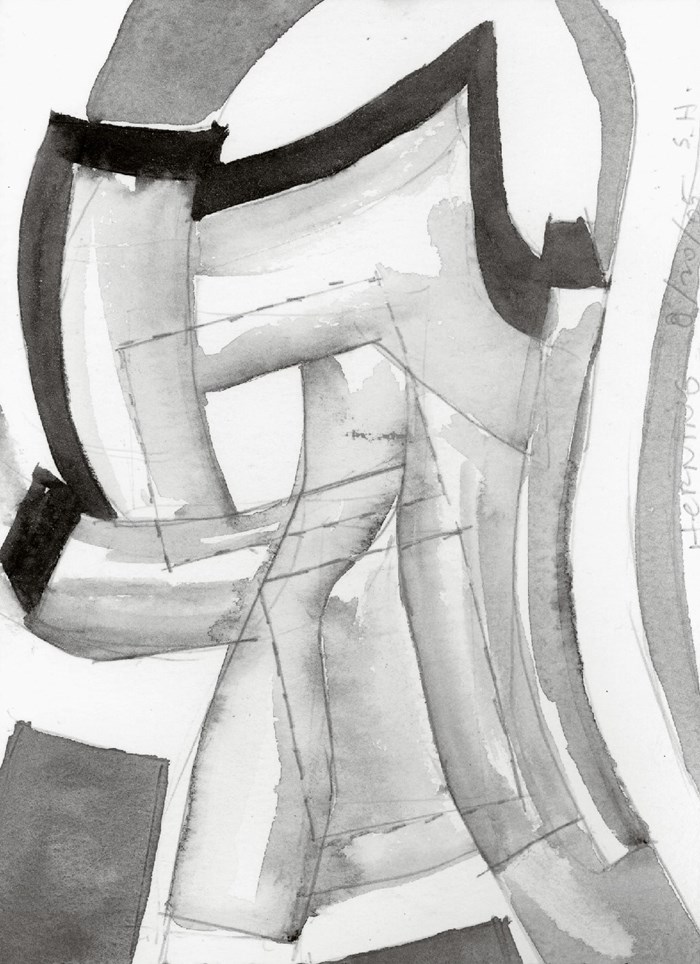
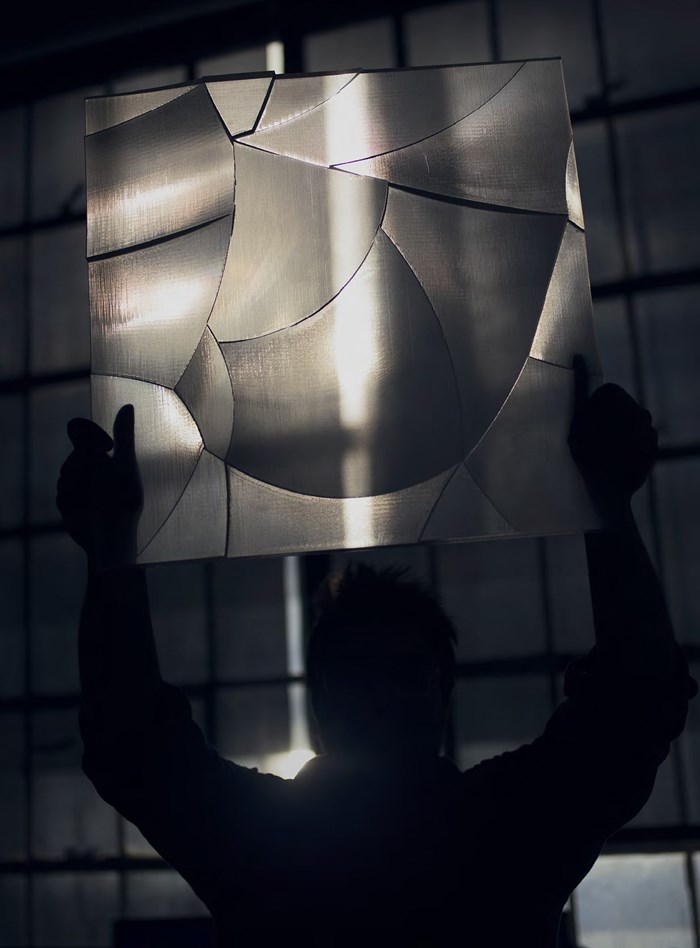
Experienced space –
what makes architecture last
The dualism of ideas and phenomena, already a central theme in Plato’s philosophy, also preoccupies Steven Holl. But he does not give precedence to either side or opt for one above the other. On the one hand he says, “The real test of architecture is the phenomena of the body moving through spaces, which can be sensed and felt regardless of understanding the architect’s concept and philosophy.”7 On the other hand, he stresses the importance of a strong idea that must form the basis of every design. “I definitely believe in ideas driving a design, and that makes me different from the people who pretend to be phenomenologists.”8 Steven Holl draws on the writings of Maurice Merleau-Ponty, Henri Bergson, Peter Sloterdijk and other philosophers for many of his ideas. “Translating those thoughts into architecture is not easy and requires a lot of work. But there is a rich potential in philosophically anchoring our discipline. We may understand essences in philosophical readings, but architecture can put these essences into our existence. This is not academic conceit because the real test of architecture is, and will always remain, when a little child walks through a building and understands it.”
Steven Holl is convinced that to truly judge buildings, you have to experience them yourself, have to wander through them and perceive them with all your senses. “The phenomenological properties of a space, its light and acoustics, the overlapping perspectives and the details – they form the true experience of architecture. This is not something you can reproduce in a magazine.”
At the same time, it is these sensual and haptic qualities that allow buildings to last. “If you visit Le Corbusier’s buildings, for example, it is fantastic how they
hold up over time. There’s a crudeness to the detailing, and of course there’s the béton brut, but they still look terrific. I think the problem in our time is that along with the increasing size of architectural offices, there is no checking back. Rather than just being interested in nice images, in the flash of publicity once a building is completed, architects really ought to return to their buildings a few years afterwards to see what happened.”
It is important for Steven Holl to follow the fortunes of his buildings over the long term. “I always used to say that my buildings are my children. Now I have a one-and-a-half year old daughter, so I tend not to make that comparison any more. But I still go back to my buildings regularly. It must be 12 or 13 times now that I revisited the Chapel of St. Ignatius in Seattle,9 and I have recently been back to the Kiasma Museum in Helsinki, which we completed nearly 20 years ago.10 They have done some renovation work to it and it is still working great; it is a socially active place and a place full of natural light. I think that is the legacy that I would like to leave behind − buildings that will remain for many years to come and, despite all the wear and tear, stand the test of time. In a way, this is the most wonderful thing you can do as an architect.”
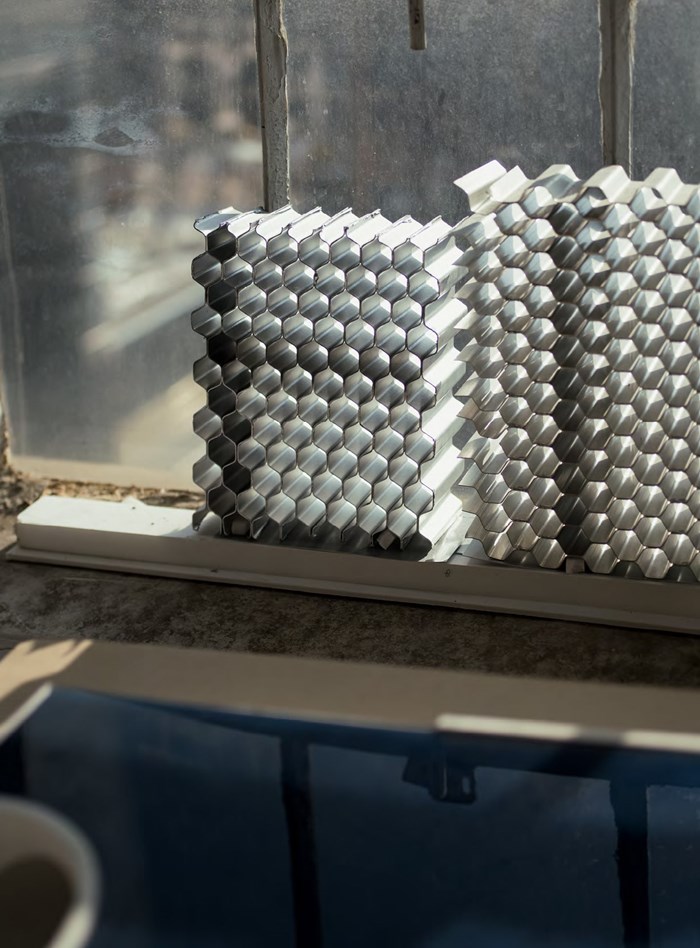

Steven Holl was born in 1947 in Bremerton, Washington. He graduated from the University of Washington and pursued architecture studies in Rome in 1970. In 1976, he attended the Architectural Association in London and established Steven Holl Architects in New York City. Since 1981, Steven Holl has taught at Columbia University in New York, where he currently serves as a tenured professor at the Graduate School of Architecture and Planning (GSAPP). Among other prizes, Steven Holl has been awarded the 2014 Praemium Imperiale, the 2012 AIA Gold Medal, and The Daylight Award 2016 for Daylight in Architecture by the VELUX Foundations. Alongside his architectural work, Steven Holl has published numerous books throughout his career, such as Anchoring (1989), Intertwining (1996), Parallax (2000), Luminosity/ Porosity (2006), Architecture Spoken (2007), Urbanisms: Working with Doubt (2009), Color Light Time (2012), and Urban Hopes (2013).
Notes
1. Q&A: Steven Holl – Point of View. Interview by Martin C. Pedersen, Metropolis Magazine, 20 March 2013. www.metropolismag.com/Point-of-View/March-2013/Q-A-Steven-Holl/
2. Steven Holl in GA Document 110. Quoted in Robert McCarter: Steven Holl. Phaidon Press 2015, p. 329
3. Concepts and Melodies. Steven Holl in a conversation with Sol Madrilejos, Juan Carlos Sancho and Antón García Abril. El Croquis 172/2014, p. 9 ff.
4. Concepts and Melodies. Steven Holl in a conversation with Sol Madrilejos, Juan Carlos Sancho and Antón García Abril. El Croquis 172/2014, p. 9 ff.
5. www.stevenholl.com/projects/daeyang-gallery-and-house
6. Steven Holl on Designing Houses. Interview with Josephine Minutillo, Architectural Digest, 31 December 2011. www.architecturaldigest.com/story/architect-steven-hollinterview-article
7. Thought, Matter and Experience. Steven Holl in a conversation with Juhani Pallasmaa. El Croquis 108/2002, p. 7 ff.
8. Steven Holl in an interview with Emanuel Petit, Architectural Review, 6 March 2013. www.architectural-review.com/rethink/interview-steven-holl/8643400.article
9. www.stevenholl.com/projects/st-ignatiuschapel
